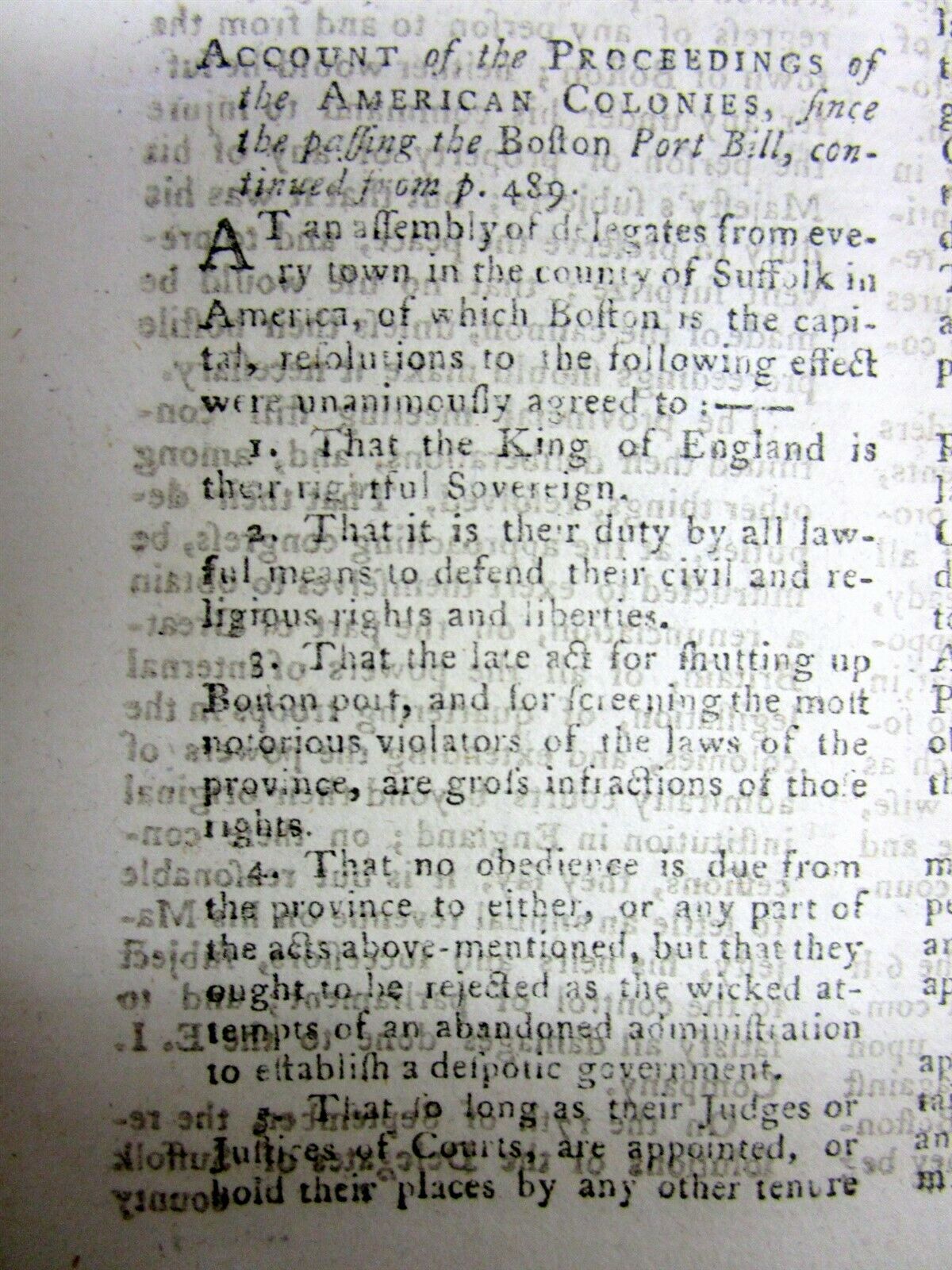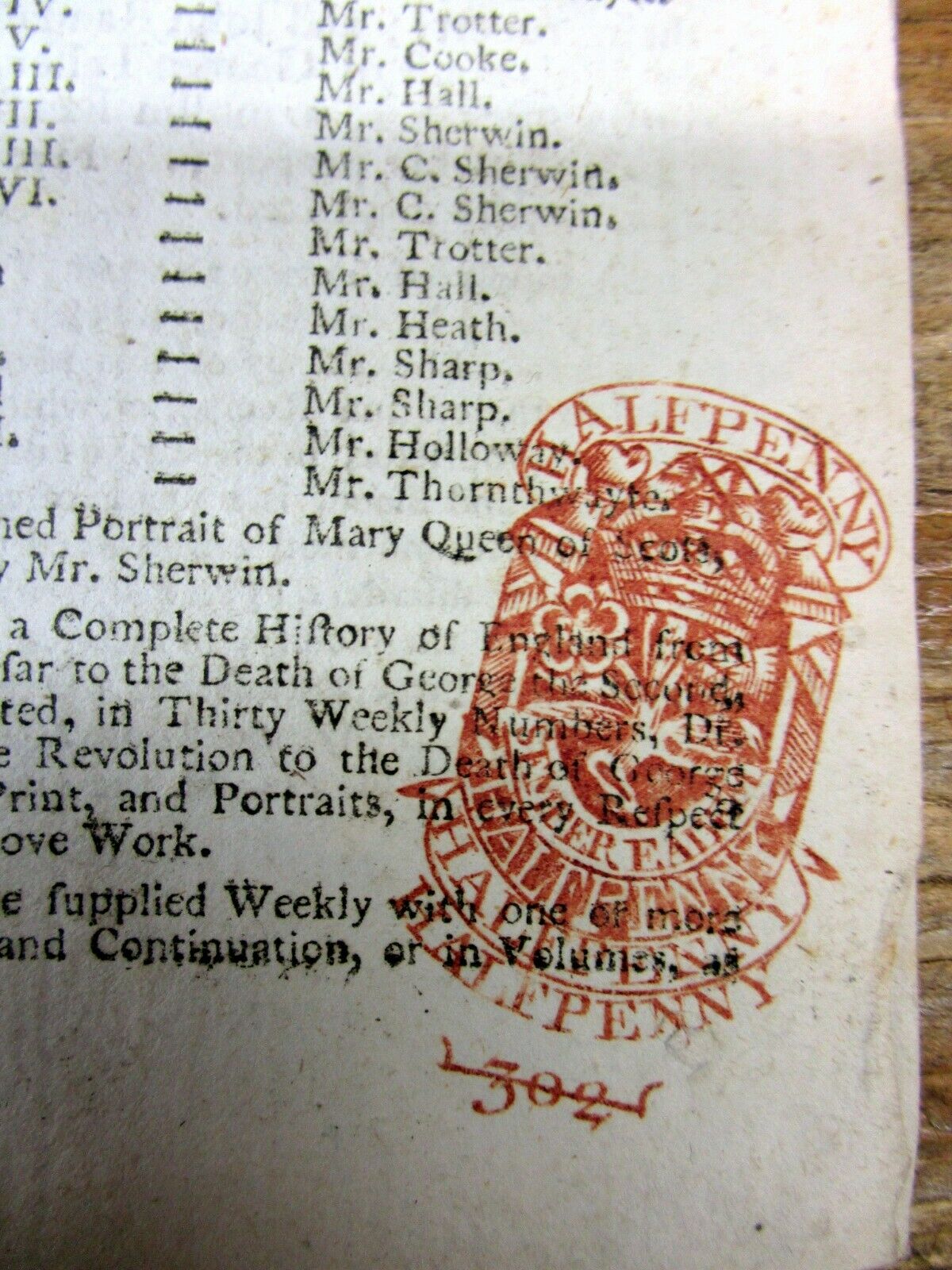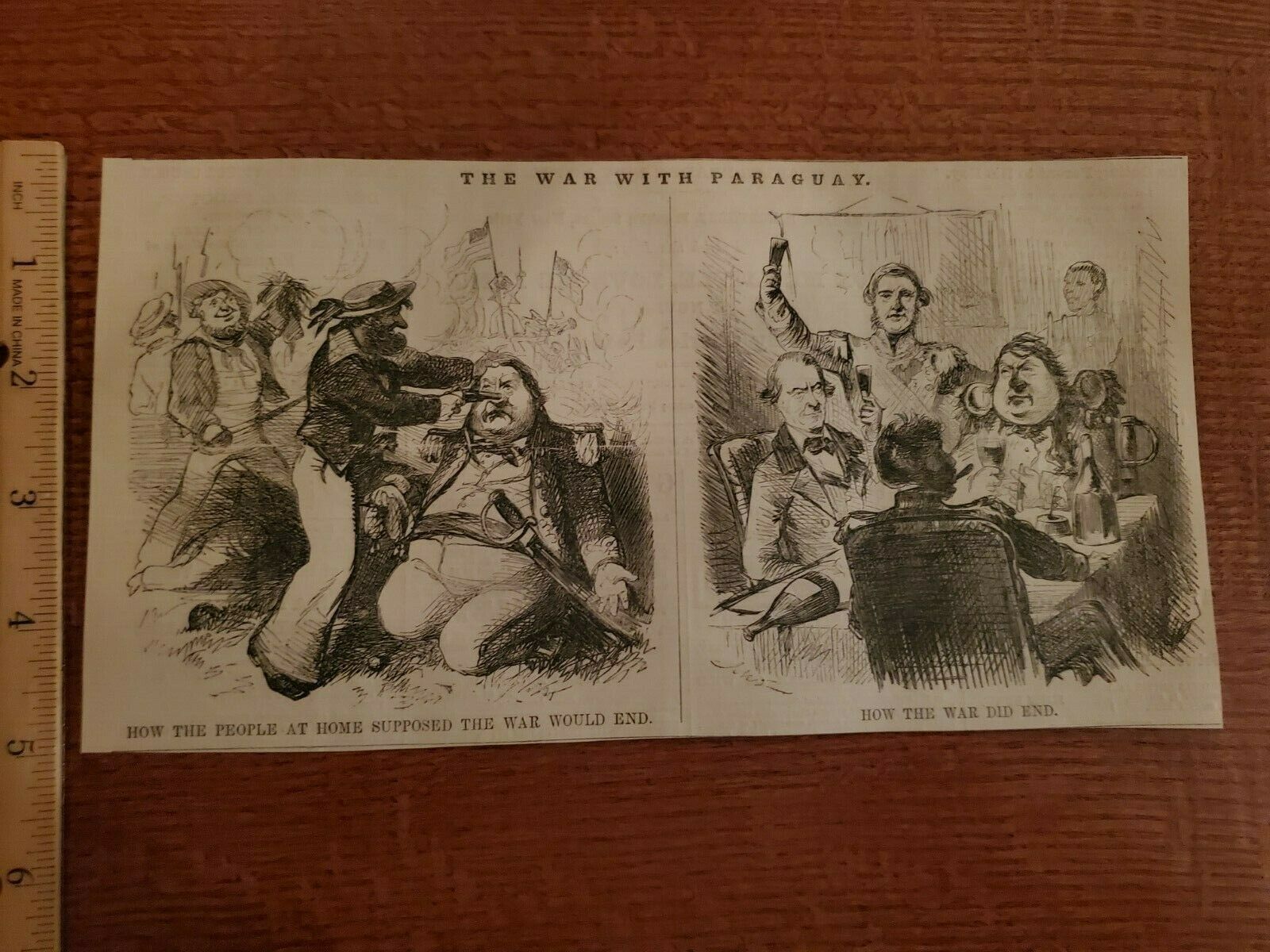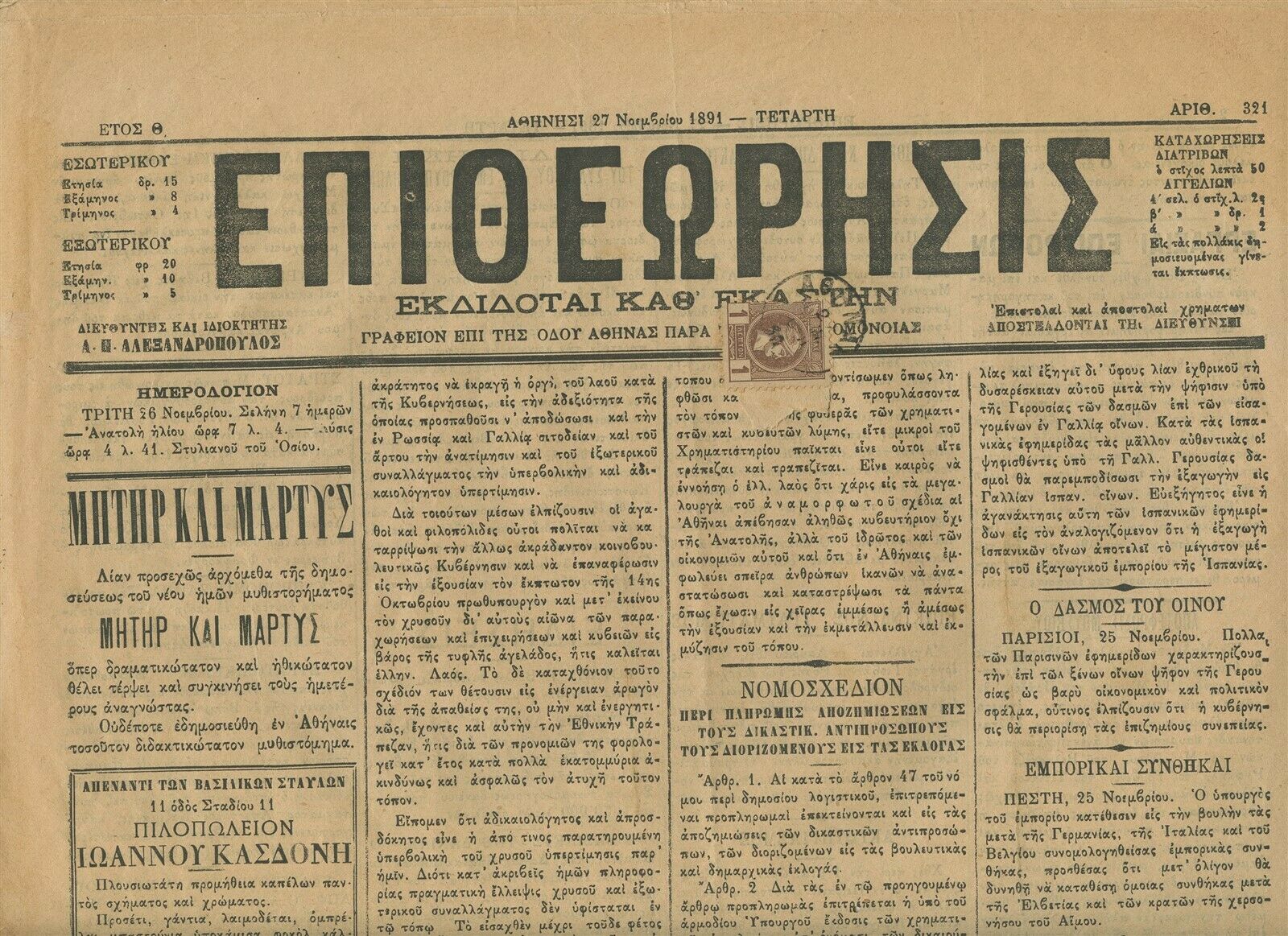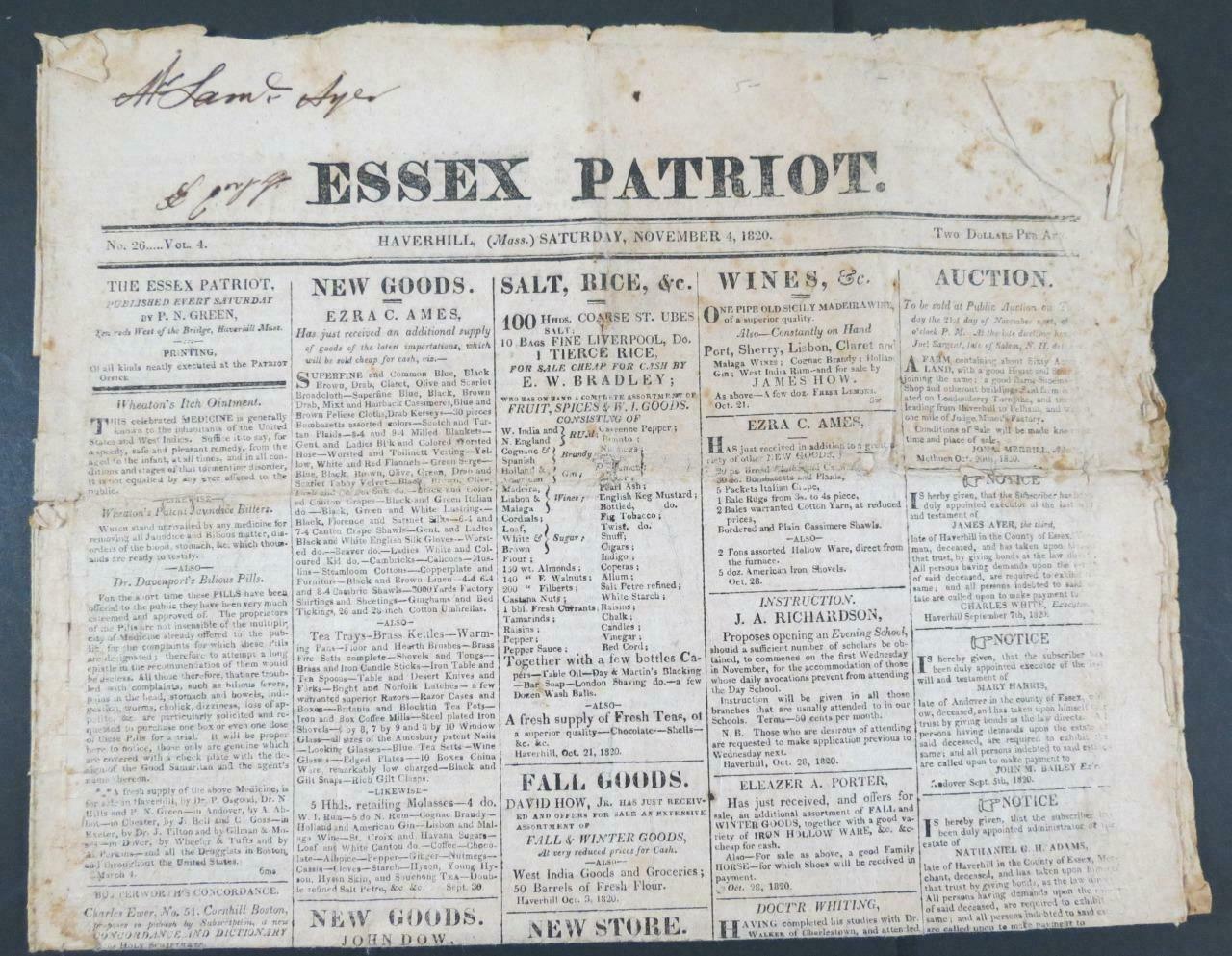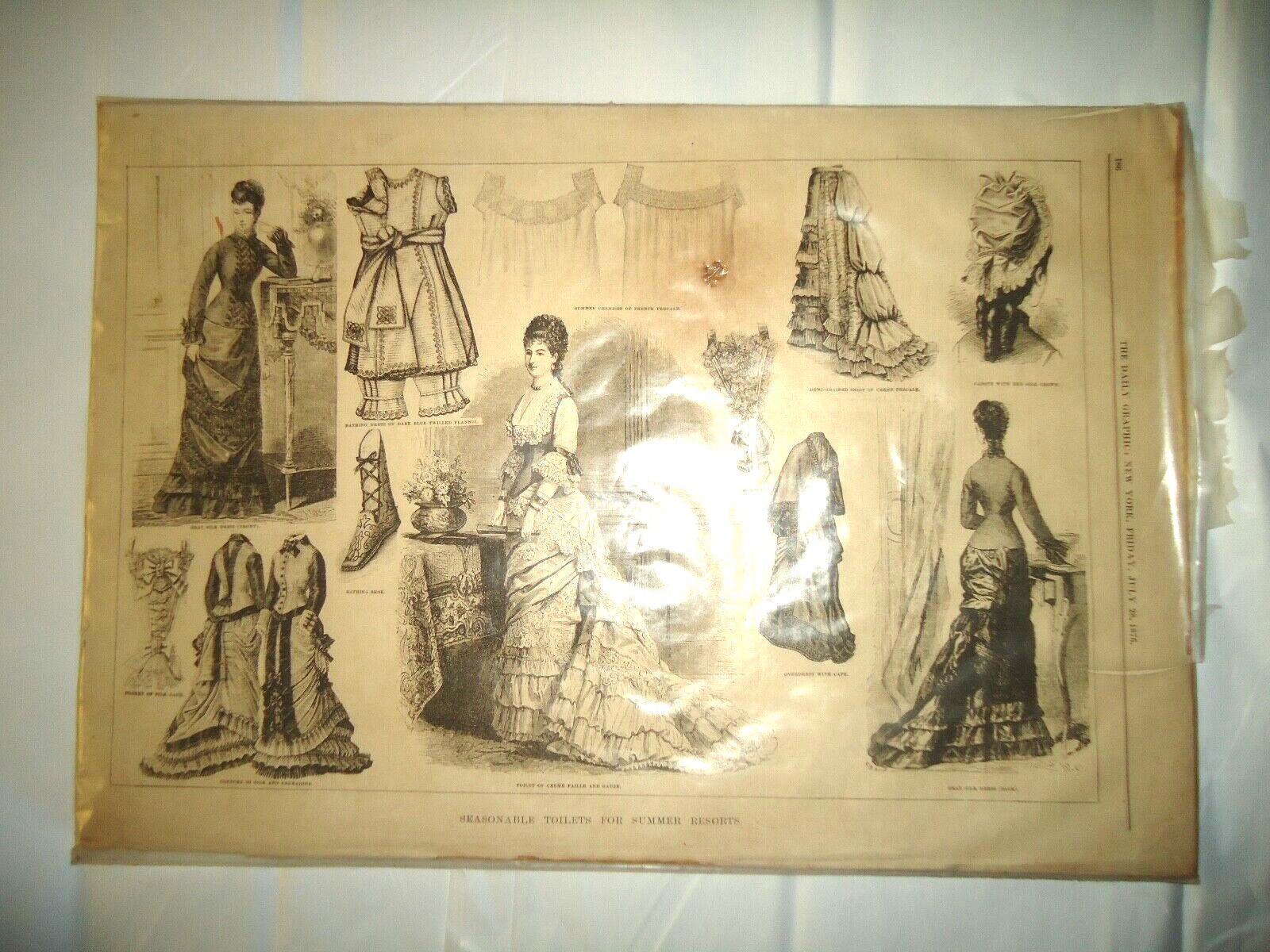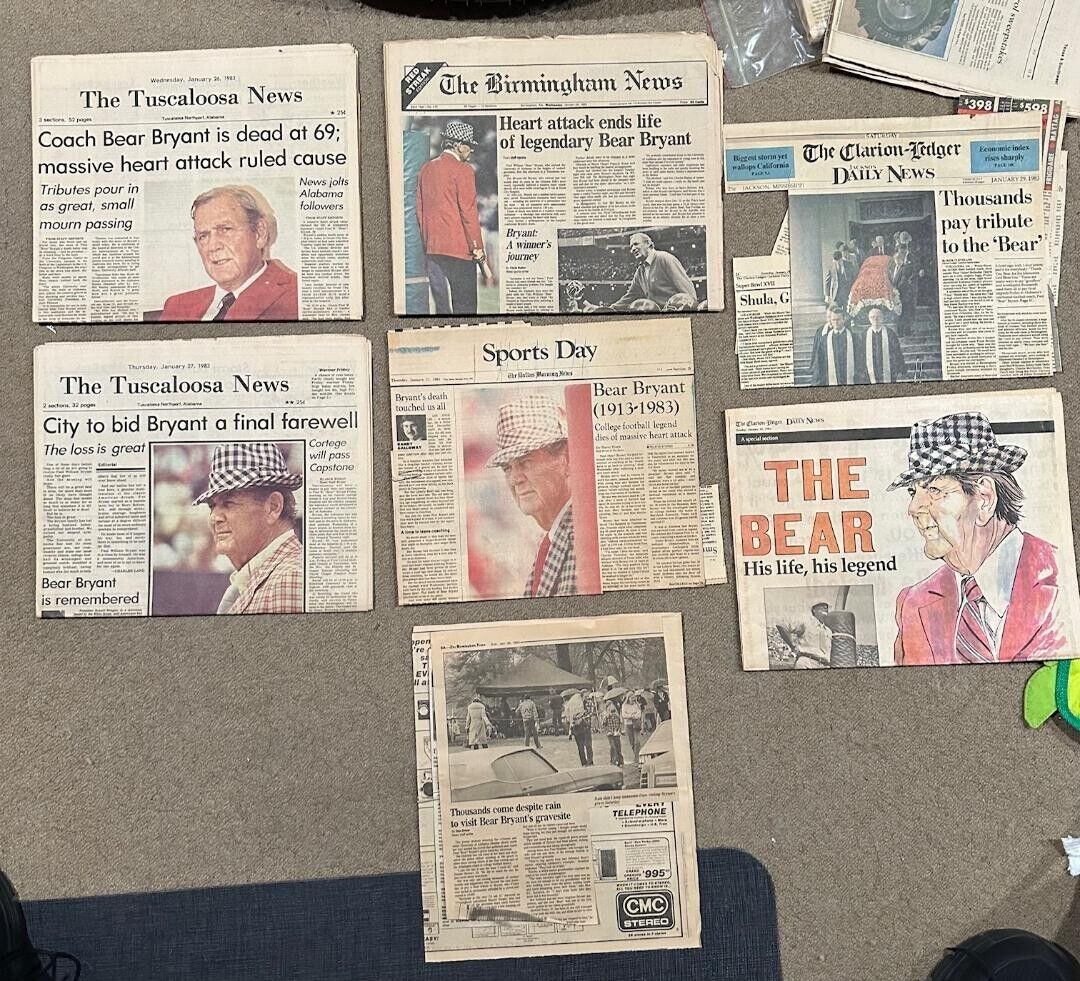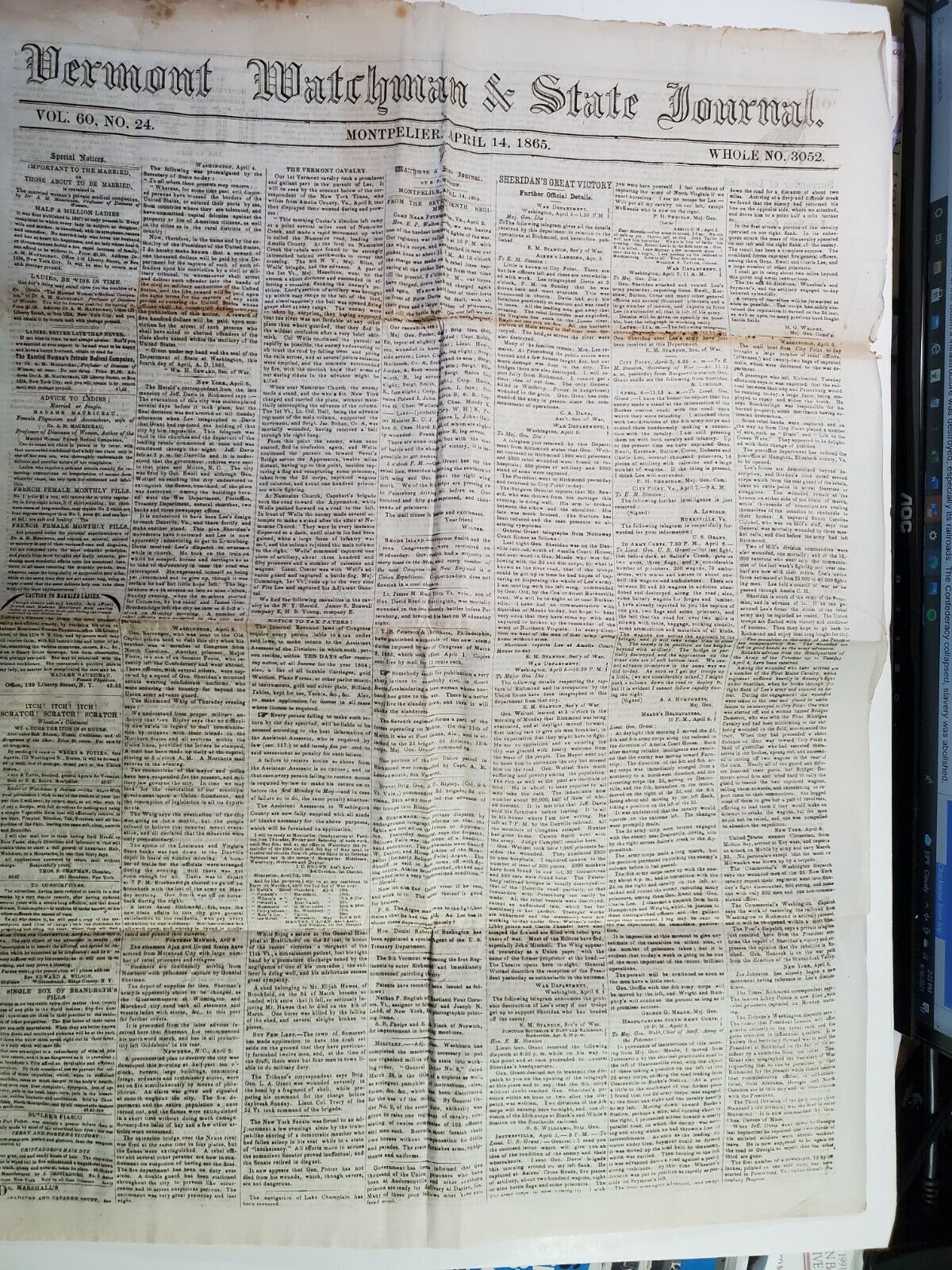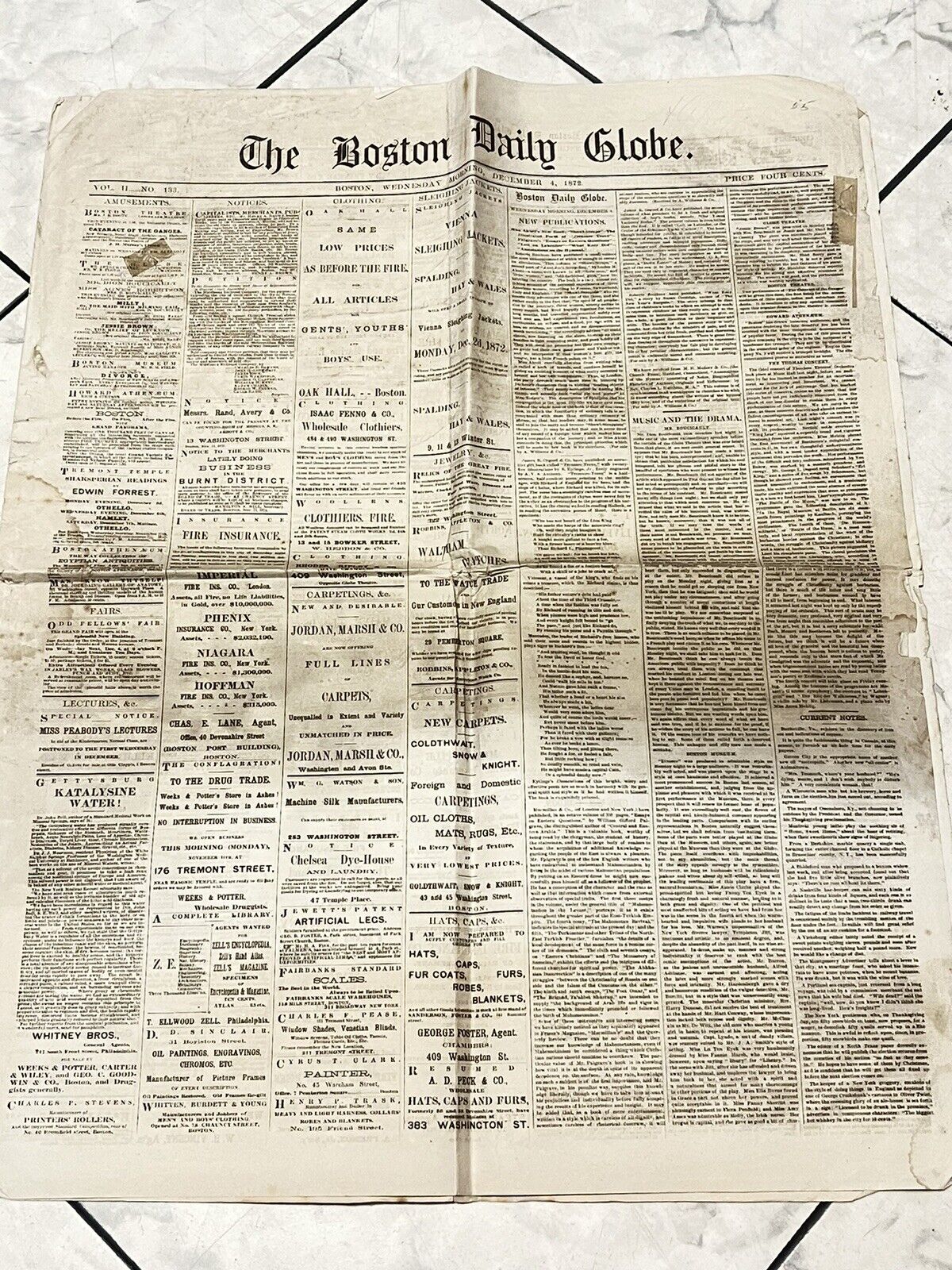-40%
1774 pre REVOLUTIONARY WAR newspaper SUFFOLK RESOLVES 1st CONTINENTAL CONGRESS
$ 264
- Description
- Size Guide
Description
1774 pre REVOLUTIONARY WAR newspaper SUFFOLK RESOLVES 1st CONTINENTAL CONGRESS1774 pre REVOLUTIONARY WAR newspaper SUFFOLK RESOLVES - 1st CONTINENTAL CONGRESS
- inv # 8R-314
Please visit our
EBAY STORE
for THOUSANDS MORE HISTORICAL NEWSPAPERS for SALE or at auction
SEE PHOTO----- A complete ORIGINAL monthly news magazine, the
Gentleman's Magazine
(London, ENGLAND) dated November, 1774. This original news magazine contains 6 pages of text with reports of the disorders in the British North American Colonies in the aftermath of the Boston Tea Party and the British imposed INTOLERABLE ACTS in response. This also contains printing of the SUFFOLK RESOLVES and news from the 1st Continental Congress.
1774 pre-Revolutionary war news magazine with long detailed coverage of the excitement in the American colonies just before the onset of the AMERICAN REVOLUTIONARY WAR
.
The First Continental Congress was a meeting of delegates from 12 of the 13 British colonies that became the United States. It met from September 5 to October 26, 1774, at Carpenters' Hall in Philadelphia, Pennsylvania, after the British Navy instituted a blockade of Boston Harbor and Parliament passed the punitive Intolerable Acts in response to the December 1773 Boston Tea Party. During the opening weeks of the Congress, the delegates conducted a spirited discussion about how the colonies could collectively respond to the British government's coercive actions, and they worked to make a common cause.
A plan was proposed to create a Union of Great Britain and the Colonies, but the delegates rejected it. They ultimately agreed in the Continental Association to impose an economic boycott on British trade, and they drew up a Petition to the King pleading for redress of their grievances and repeal of the Intolerable Acts. That appeal had no effect, so the colonies convened the Second Continental Congress the following May, shortly after the battles of Lexington and Concord, to organize the defense of the colonies at the outset of the Revolutionary War. The delegates also urged each colony to set up and train its own militia.
The Suffolk Resolves was a declaration made on September 9, 1774, by the leaders of Suffolk County, Massachusetts. The declaration rejected the Massachusetts Government Act and resolved on a boycott of imported goods from Britain unless the Intolerable Acts were repealed. The Resolves were recognized by statesman Edmund Burke as a major development in colonial animosity leading to adoption of the United States Declaration of Independence from the Kingdom of Great Britain in 1776, and he urged British conciliation with the American colonies, to little effect. The First Continental Congress endorsed the Resolves on September 17, 1774.
On August 26–27, the Committees of Correspondence from Suffolk, Middlesex, Essex, and Worcester counties met at Faneuil Hall in Boston to oppose the recent Massachusetts Government Act, which had disenfranchised citizens of Massachusetts by revoking key provisions of the provincial Charter of 1691. The convention urged all Massachusetts counties to close their courts, rather than to submit to the oppressive measure. Berkshire had already done so, and by the first week of October, seven of the nine contiguous mainland counties in Massachusetts had followed suit.
As each county in turn closed its court, it issued a set of resolves to explain its actions. Although the resolves were all similar in tone and scope, the one written by patriots in Suffolk has received more attention for two reasons: it was better crafted, and it was formally endorsed by the Continental Congress. Suffolk, which contained Boston, was the only county in which courts remained nominally open, under the protection of British troops.
At the Suffolk County Convention of the Committees of Correspondence on September 6, 1774, Joseph Warren introduced the first draft of the Suffolk Resolves, which were edited and approved three days later at the Daniel Vose House in Milton, Massachusetts, which was then part of Suffolk County but is now in Norfolk County, Massachusetts. The convention that adopted them had first met at the Woodward Tavern in Dedham, which is now the site of the Norfolk County Registry of Deeds. As with the other counties' resolves, the Suffolk document denounced the Intolerable Acts, or Coercive Acts, which had recently been passed by the British Parliament and specifically resolved the following:
boycott British imports, curtail exports, and refuse to use British products;
pay "no obedience" to the Massachusetts Government Act or the Boston Port Bill;
demand resignations from those appointed to positions under the Massachusetts Government Act;
refuse payment of taxes until the Massachusetts Government Act was repealed;
support a colonial government in Massachusetts free of royal authority until the Intolerable Acts were repealed;
urge the colonies to raise militia of their own people.
In one of his less famous rides, Paul Revere delivered a copy of the Resolves to the First Continental Congress in Philadelphia, Pennsylvania, where it was endorsed on September 17 as a show of colonial solidarity. In response, John Adams commented in his diary: "This was one of the happiest days of my life. In Congress we had generous, noble sentiments, and manly eloquence. This day convinced me that America will support Massachusetts or perish with her."
Endorsement of the Suffolk Resolves and, with it the rebellion that had enveloped Massachusetts, altered the political balance in Congress and paved the way for radical measures, such as the Continental Association, a general nonimportation agreement. Previously, nonimportation agreements had been limited to specific localities, but this one applied throughout the rebellious colonies. The Committees of Inspection (also called the Committees of Safety), which were formed to enforce the Continental Association, established a revolutionary infrastructure, similar to that of the Sons of Liberty during the early days of the resistance.
A number of counties in other colonies adopted declarations of grievances against Britain before the Declaration of Independence, including the Mecklenburg Resolves and the Tryon Resolves in 1775 and at least 90 other documents favoring independence in the spring of 1776,[5] but the resolves from the Massachusetts County Conventions in August–October 1774 were the first to promote across-the-board noncompliance with British governmental authority.
The Gentleman's Magazine was founded in London, England, by Edward Cave in January 1731. It ran uninterrupted for almost 200 years, until 1922. It was the first to use the term "magazine" (from the Arabic ma?azin
, meaning "storehouse") for a periodical. Samuel Johnson's first regular employment as a writer was with The Gentleman's Magazine.
The original complete title was The Gentleman's Magazine: or, Trader's monthly intelligencer. Cave's innovation was to create a monthly digest of news and commentary on any topic the educated public might be interested in, from commodity prices to Latin poetry. It carried original content from a stable of regular contributors, as well as extensive quotes and extracts from other periodicals and books. Cave, who edited The Gentleman's Magazine under the pen name "Sylvanus Urban", was the first to use the term "magazine" (meaning "storehouse") for a periodical. Contributions to the magazine frequently took the form of letters, addressed to "Mr. Urban". The iconic illustration of St John's Gate on the front of each issue (occasionally updated over the years) depicted Cave's home, in effect, the magazine's "office".
Before the founding of The Gentleman's Magazine, there were specialized journals, but no such wide-ranging publication (although there had been attempts, such as The Gentleman's Journal, which was edited by Peter Motteux and ran from 1692 to 1694).
This news magazine has approximately 60 pages and the page size is 8 1/4" x 5 1/4". The magazines were often issued with several blank back engraved illustrated plates relating to various subjects in that particular issue. The Gentleman's Magazine was in essence the "Time" or "Newsweek" news magazine of the 18th and 19th Centuries !! It was also one of the first general-interest magazines, and one of the most influential periodical of its time.
Very good condition. This listing includes the complete entire original news magazine, NOT just a clipping or a page of it. STEPHEN A. GOLDMAN HISTORICAL NEWSPAPERS stands behind all of the items that we sell with a no questions asked, money back guarantee. Every item we sell is an original newspaper or news magazine printed on the date indicated at the beginning of its description. U.S. buyers pay priority mail postage which includes waterproof plastic and a heavy cardboard flat to protect the purchased item from damage in the mail. Upon request by the buyer, we can ship by USPS Media Mail to reduce postage cost; however, please be aware that USPS Media Mail can be very slow in its time of transit to the buyer. International postage is quoted when we are informed as to where the package is to be sent. We do combine postage (to reduce postage costs) for multiple purchases sent in the same package.
We list thousands of rare newspapers with dates from 1570 through 2004 on Ebay each week. This is truly SIX CENTURIES OF HISTORY that YOU CAN OWN!
Stephen A. Goldman Historical Newspapers has been in the business of buying and selling historical newspapers for over 50 years. Dr. Goldman is a consultant to the Freedom Forum Newseum and a member of the American Antiquarian Society. You can buy with confidence from us, knowing that we stand behind all of our historical items with a 100% money back guarantee. Let our 50+ years of experience work for YOU ! We have hundreds of thousands of historical newspapers (and their very early precursors) for sale.
Stephen A. Goldman Historical Newspapers
has been in the business of buying and selling historical newspapers for over 50 years. We are located in the charming Maryland Eastern Shore town of OXFORD, Maryland.
Dr. Goldman is a consultant to the Freedom Forum Newseum and a member of the American Antiquarian Society. You can buy with confidence from us, knowing that we stand behind all of our historical items with a 100% money back guarantee. Let our 50+ years of experience work for YOU ! We have hundreds of thousands of historical newspapers (and their very early precursors) for sale.
We invite customer requests for historical newspapers that are not yet located in our extensive Ebay listing of items. With an inventory of nearly a million historical newspapers (and their early precursors) we are likely have just the one
YOU
are searching for.
WE ARE ALSO ACTIVE BUYERS OF HISTORICAL NEWSPAPERS, including large and small personal collections, bound volumes, significant individual issues, or deaccessions from libraries and historical societies. IF YOU WANT TO SELL, WE WANT TO BUY !!!
Powered by SixBit's eCommerce Solution
